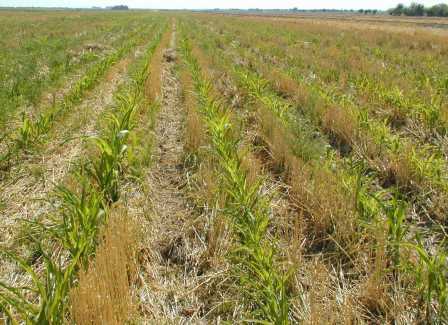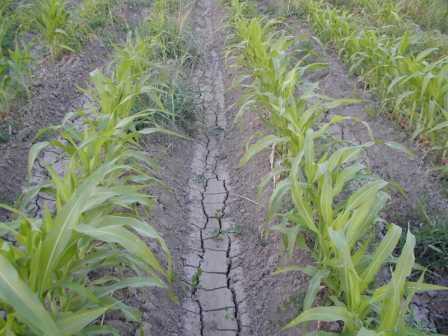Morozov
A.N.
Lecture 10. How could be
controlled soil moisture?
| There are three type of ignorance: know zip
about, poor knowledge, and knowledge of the other things than you should know. |
| P. DUCLO. |
We
have already told that there are many methods of conservation and recharging of
moisture in soil horizon. Let us tell in greater details about that.
First
of all we shall tell you on moisture conservation methods close to natural ones.
They are all possible ways to "cover" moisture with mulch (it is surface
dressing with some loose organic waste: straw, floor, hay, dry shaw, dry leaves,
wood scrap etc.), or - by tillage of thin surface soil layer from time to time.
Sod at cultivated fields may be developed (recreated) only with so called minimal
tillage and having high degree preservation of afterharvesting residues. But if
we have to use furrow irrigation, border check irrigation or basin irrigation
at our field then as a rule we should forget about sod and after that only ploughed
mulch from plant residue or loose soil layer at least are left in our arsenal.
We have to refuse sod (i.e. layer of organic at the field surface) because of
these residues at surface will cause problems to irrigate uniformly and besides
you can not sow without special seeder that is able to sow directly over afterharvesting
residues.

Picture
10.1. Field surface covered with plant residues - which is food for soil habitants
and it is blanket that prevents from severe aridization. It is obvious that it
is not possible to irrigate along such furrows without high losses.

Picture
10.2. It is for comparison - appearance of another field that has not covered
with plant residues. It is clearly seen that there is nothing to eat for living
bodies in the soil, and seeing at cracks moisture we may also conclude that it
is not enough to live well.
Maintenance of
the thin soil surface layer in permanently broken state (after snow melting and
after each rain or irrigation) also supports to prevent soil moisture from over-drying.
It
should be noted that the mentioned methods in actual practice could replace irrigation,
because they reduce significantly (sometime twice and even more) inefficient water
charging. We shall discuss that in the one of the following our lectures, and
we shall try to understand together with you, the reason of the great farmers
do not plough soil deeper than to 4-5 cm, and why they have not bad yield even
when they have severe dry weather…
But
there is a limit to any moisture conservation, especially in our arid conditions.
Even if we cover soil surface with water proof film (it should be done very carefully,
because this method is poorly known and it can significantly change natural gaseous
metabolism in soil), and if water consumption for transpiration by plants is more
than water storage in soil together with precipitations then anyway the soil may
be dried up to limited values but lower of that values plants can not grow normally
and complete their life journey.
Amount of
the moisture necessary consumption for plants growth that we discussed in the
Lectures #2 and 6 is accepted to call as biologically essential rate.
The
(Êê) coefficient, whereof we discussed in Lecture #6 that determined
total amount of water consumption for evaporation from soil surface and transpiration
by plants, and for soils which suffer from salinization should be added additional
amount of water for salts washing provision.
However,
when all alternatives of water saving have used and that can not satisfy the cultivated
crops and of course us who desire to achieve more yield than is possible with
using resources of moisture in natural way, then we shall have to use irrigation.
There
are many kinds of irrigation, but essentially, all these methods can be divided
into two categories: surface pounding with thin layer of water and water delivering
in form of separate water drops. Principal difference between them we shall discuss
in Lecture 12

